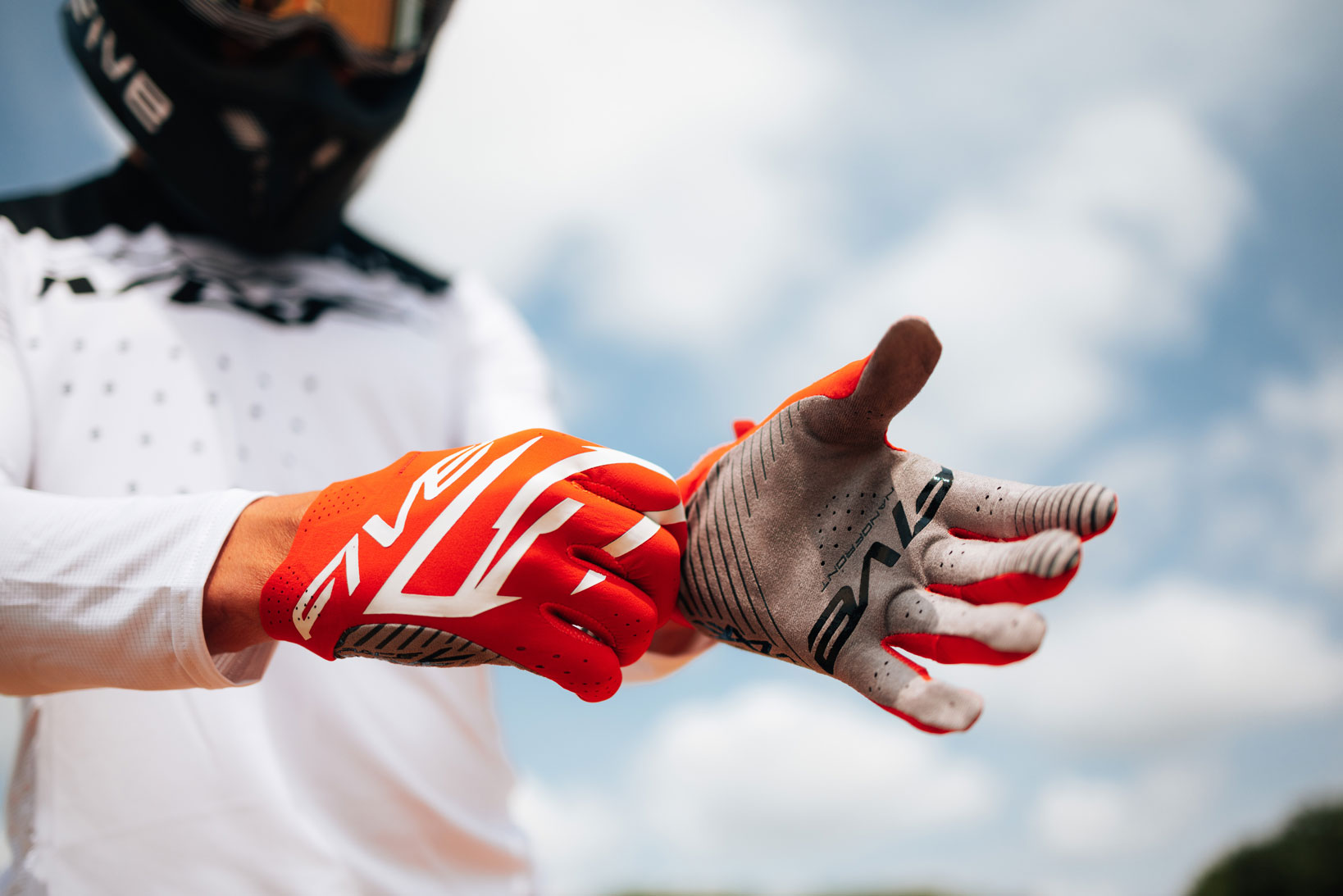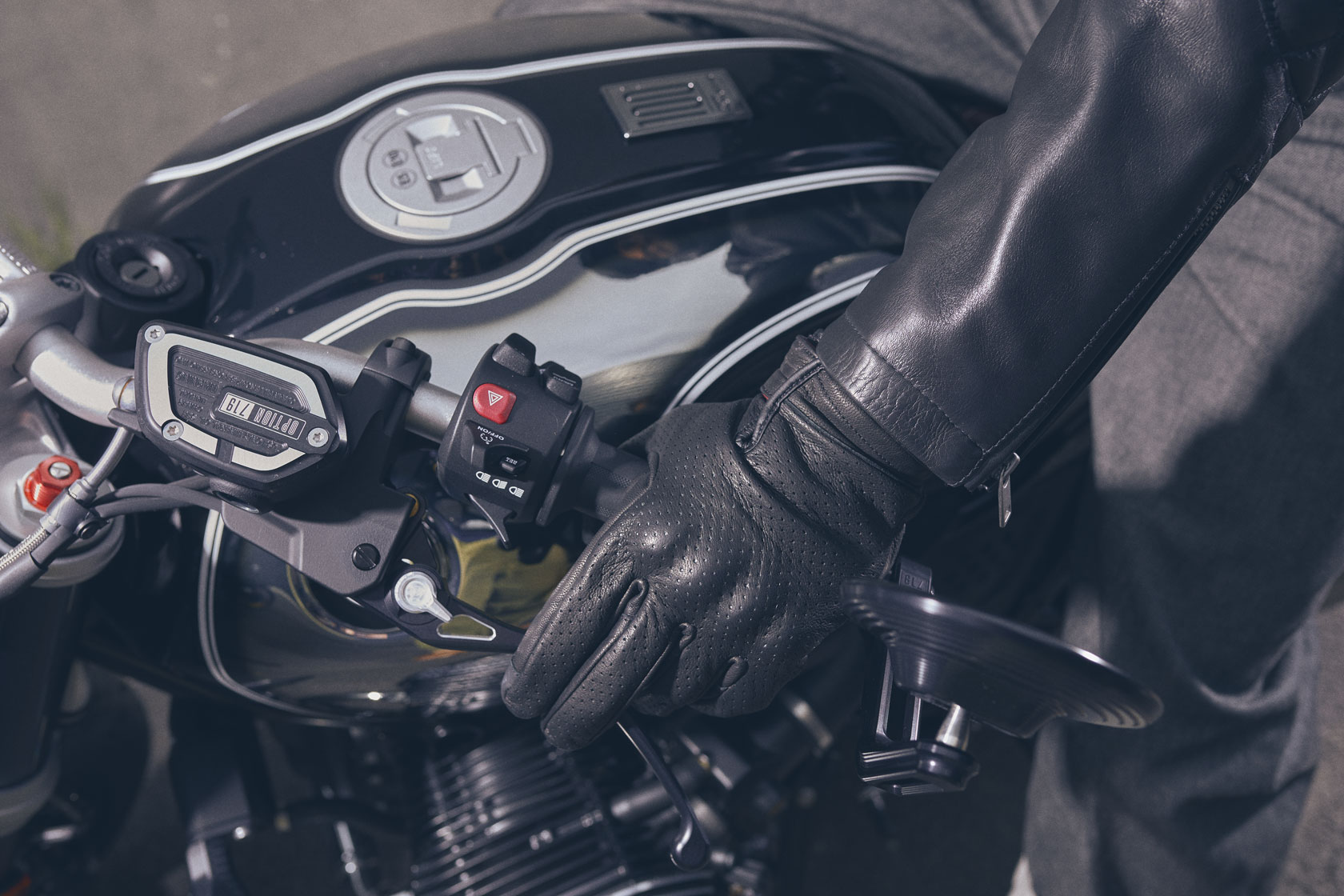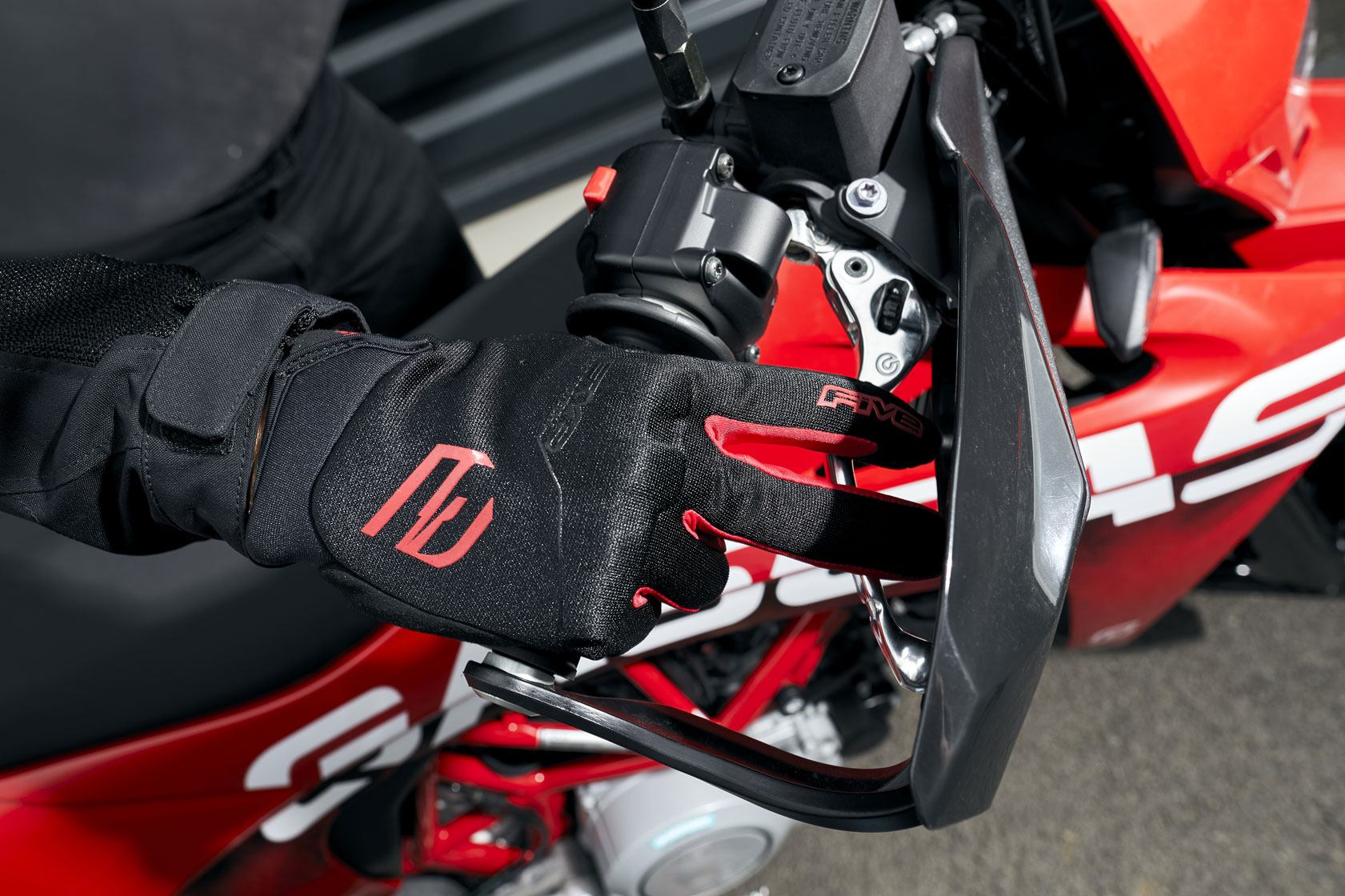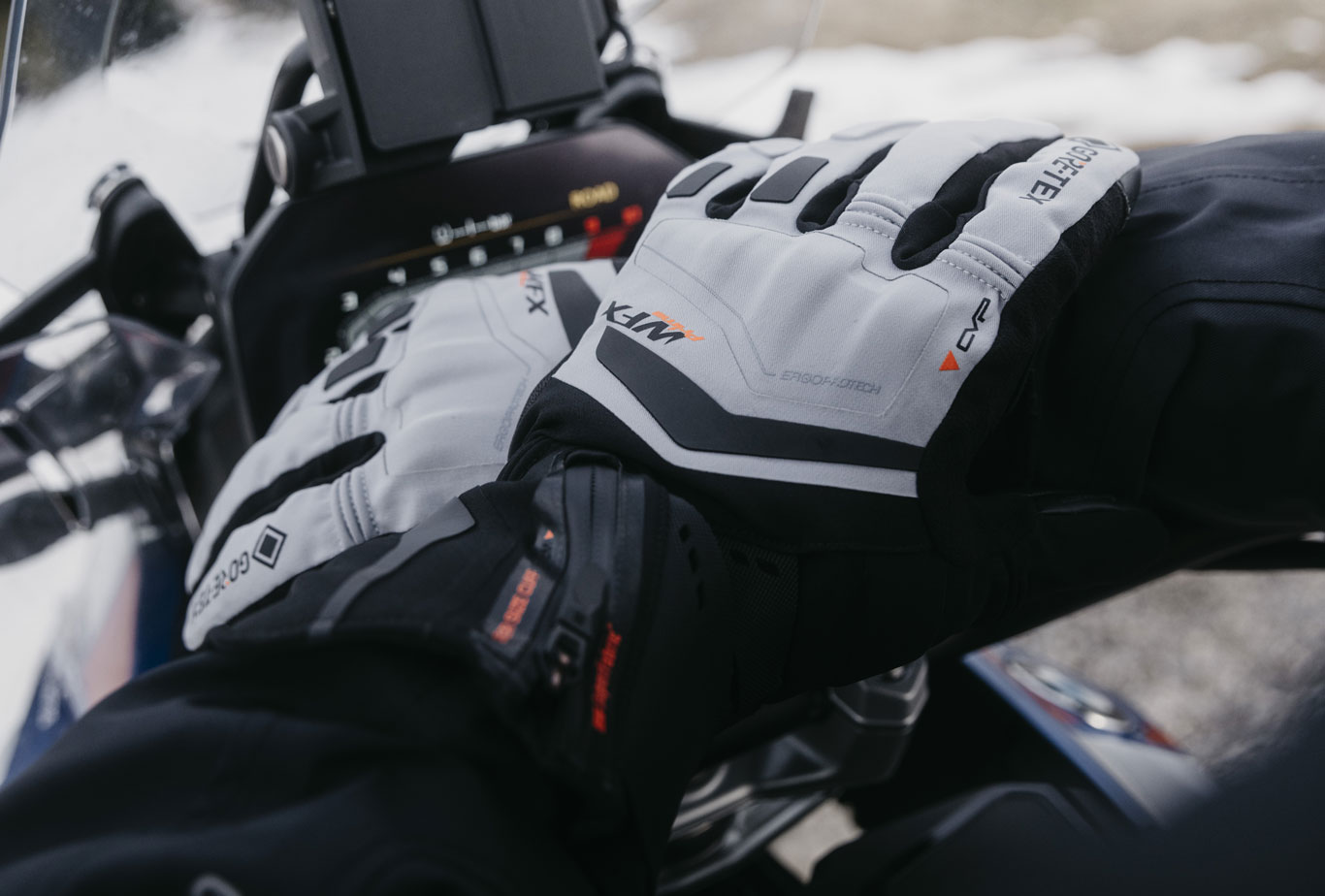Maintaining your gloves
How to care for your motorcycle gloves
If you want to be able to use your motorcycle gloves for as long as possible, and ensure that they retain their original comfort, safety and aesthetic properties, they need to be maintained on a regular basis.
An essential tip: don't use the same pair of gloves every day, repeatedly and systematically. As with footwear, we recommend alternating between several pairs. This allows the glove to dry out naturally between uses, and reduces deterioration of the leather or materials it's made of. In short, they will wear less quickly and last longer.
To care for and clean your gloves, it's important to distinguish between the different types of glove, taking into account the materials they're made of and their characteristics, and to adopt an appropriate care method.
We've divided our gloves into four categories, representing all the models in our range.
Here are our recommendations for easily cleaning your gloves without damaging them.
Off-road gloves
Gloves used in off-road disciplines are put to a severe test. It is often necessary to clean them after every ride, whether motocross or enduro. Projections of dirt, sand or mud, perspiration, scratches, hands that have rubbed the ground because of a fall, are all reasons for dirtying gloves.
To clean your off-road gloves, made entirely of textile, we invite you to adopt a simple gesture: Exactly the same way you wash your hands every day in a sink, with soap and water!

- Put on your dirty gloves.
- Pre-rinse with warm water by running your gloved hands under running water.
- Add a few drops of liquid detergent to each glove.
- Rub your hands vigorously.
- If necessary, use a brush or a used toothbrush for the hard plastic parts (shells, Velcro) of the glove.
- Rinse with water, passing gloved hands directly under the tap.
- Repeat the whole operation once, if necessary.
- Remove gloves and wring out excess water with your hands.
- You can also shake them dry if you're outside.
- Then let your gloves air-dry at room temperature. You can hang them on a clothesline or towel dryer. Avoid any source of high heat, such as direct sunlight, tumble dryers, hair dryers or radiators, which could damage the glove.
You can also clean your gloves in the washing machine. However, this requires a few precautions.
We recommend not mixing them with the rest of your equipment, to avoid certain elements on the pants (leather inserts, velcro, etc.) from bleeding, rubbing off or damaging your gloves.
- Set the machine for a 30°C cycle (a higher temperature could irreversibly damage the gloves).
- Make sure you close the velcro tabs on the gloves to prevent them from catching and damaging the glove fabric in the machine drum.
- Ideally, place your gloves in a laundry net (cover) so that they don't come into contact with the rest of the laundry in the machine.
- Let your gloves dry in the open air at room temperature, on a clothesline or towel dryer. Avoid any source of high heat, such as direct sunlight, tumble dryers, hair dryers or radiators.
Now you're ready for your next outing!
Gloves containing leather (full structure or palm)
A popular choice for most of our models, thanks to its suppleness, comfort and protection, natural leather can nevertheless be tricky to maintain on motorcycle gloves exposed to the elements, perspiration, rubbing on the handles, pollution or the sun. Leather requires special care and regular maintenance to preserve all its qualities over the long term.
To optimize the life of your leather gloves, we recommend that you clean them as soon as they appear dirty, without delay, to prevent stubborn stains from becoming irreversibly ingrained.

Exterior glove care
- Washing leather gloves under running water is clearly not recommended, so avoid running them under the tap and soaking them. Instead, use a soft cloth dampened with lukewarm water to gently clean the glove.
- To avoid damaging the leather, do not rub hard with anything other than a soft micro-fiber cloth, unless you use a soft bristle brush (such as a shoe brush).
- Rub gently until stains disappear.
- Let dry in the open air. Avoid any source of high heat (direct sunlight, tumble dryers, radiators or hair dryers). This could cause the leather to stiffen and eventually crack.
- Once the glove is perfectly dry, complete its care by applying a cream, milk or special product dedicated to leather care. This will deeply nourish the glove, soften it and protect it from stains.
Internal glove care
- Prolonged use, coupled with perspiration, can lead to an unpleasant odor inside gloves. To remedy this, you'll find antibacterial fabric care sprays on the market. You can also use sprays designed for helmet interior care. Spray inside each glove and allow to air dry.
- Above all, never turn your glove inside out to clean it, as this can cause serious and permanent damage.
Fabric gloves, containing shells, without waterproof membrane
Although motorcycle gloves made from textile do not contain any leather parts, they should also be cared for by hand. They should not be put in the washing machine. The assembly of their many components (shells, thermo-bonding, etc.) may not withstand it.
Regular external and internal cleaning will keep your gloves looking and smelling their best for longer.

Exterior glove care
- To care for your textile gloves, prepare a cleaning solution consisting of warm water mixed with a reasonable quantity (to avoid unnecessary foaming) of detergent, preferably liquid.
- Apply the mild solution using a soft bristle brush, toothbrush or damp cloth to clean the entire glove.
- Brush gently to avoid damaging the material. Avoid soaking your gloves too much in water.
- Then use a damp, soft microfiber cloth to remove any excess cleaning solution.
- Continue until all traces of cleaning solution have been removed.
- Let gloves air-dry at room temperature. Avoid sources of high heat, such as direct sunlight, tumble dryers, hair dryers or radiators.
Internal glove care
- Prolonged use, combined with hand perspiration, can lead to unpleasant odors on the inside of your gloves. Nothing to worry about.
- To remedy this, use a commercially available antibacterial fabric care spray. Don't hesitate to use the sprays for helmet interior care offered by most specialist manufacturers.
- Spray inside each glove and allow to air dry.
- Under no circumstances should you turn your glove inside out, as this may cause permanent damage.
- Make sure your gloves are completely dry before using them again.
Now you're ready to get back on the handlebars.
Gloves with waterproof membrane and heated gloves
Here we include all models with a waterproof membrane (with or without thermal insulation) and gloves with electric heating using filaments and a battery.
At FIVE, their names include HG (Heating Gloves), WP (Waterproof) or GTX (Gore-Tex).
These require the utmost care when it comes to handling, maintenance and general care.


Never immerse them in water, soak them from the inside, twist them or wring them out, as this could seriously damage them and permanently lose their waterproof properties, or even destroy the electrical system contained in the heated glove models.
Always remove the batteries from heated gloves before servicing, and replace them only when the glove is completely dry.
This means you can only maintain them by hand. Washing in a washing machine is simply out of the question for these models.
To care for them, follow the instructions given above for textile gloves, taking care not to let any water get inside.
This is even truer for these models than for any other. Never let them dry near a heat source. This could cause irreversible damage, or even a flashover. The gloves could catch fire, due to the presence of batteries, in case you've forgotten them inside the glove.
As you can see, it's important to use common sense and care when it comes to maintaining your FIVE motorcycle gloves.
Always keep them in a dry, temperate place. Avoid keeping them at the bottom of an unventilated bag, or storing them folded and still damp at the bottom of a helmet. Instead, arrange them carefully on the shelf of a sound room, without distorting them, and place them above the rest of your equipment, rather than below it.
It's the assurance of keeping them in good condition for a long time to come.
In short, treat your motorcycle gloves as you'd like to be treated, and they'll thank you by staying with you on the handlebars for months or even years to come.